Abstract
Digital education is the logical stage of social life's digitalia. In the field of Russian physical education digital technologies have been actively developed and implemented over the past eight years. The purpose of this study is to determine a systematic view of the digitalization of education and the place of the author’s position in it, formulated by the results of a three-year pedagogical experiment in the implementation of the distance course “The highest achievements' sport as a sphere of creative activity”. We have revealed that the distance educational format, as well as the traditional educational format, allows, performing tasks of current control (writing a lecture notes with a further answer to control questions in the form of a specific table, writing creative homework with a further answer to control questions in the form of a specific table, answers to control questions on topics of discussions and heuristic conversations in the form of a specific table, writing theoretical and creative essays with further preparation of presentations for their distance defense by way of answers to control questions in the form of a specific table, performing author's research based on the analysis of abstracts of dissertations by leading scientists on the subject of the course), fully prepare for passing the intermediate control (exam) and get the final certification in academic discipline.
Keywords: Digitalizationserviceseducationsportdistance course
Introduction
Definition of concepts
Digital education is considered as a type of education that allows the formation of knowledge, skills, possessions (experience) and competencies through the digital educational environment (Jiang et al., 2019; Kim et al., 2013).
One of the powerful technologies used by digital education is distance education technology (Dede, 1996).
Distance learning is the leading pedagogical link in distance educational technology, represents “distance learning” through a digital educational environment, includes all the teaching components (goal, tasks, means, methods, teaching methods, techniques, technologies, organizational forms) (Anderson & Dron, 2011; Bozkurt et al., 2015; Zawacki-Richter et al., 2009).
Literature review
Determining the relevance of the study
Currently, in the field of physical education, distance learning technologies are actively developed, implemented and applied (Bordovsky et al., 2019; Chechelnitskaya, 2014; Landa, 2016; Lukina et al., 2019; Petrov, 2017; Somkin et al., 2019; Ul'yanov & Kovalenko, 2016; Veselovskaya et al., 2018; Zakrevskaya et al., 2018).
One of the educational platforms, where distance education technology is being actively developed, is the university website of distance education of The Federal State Budget Educational Institution of the Higher Education "National State University of Physical Culture, Sport and Health named after P. F. Lesgaft, Saint-Petersburg." One of the distance courses functioning within the framework of this educational platform is the distance course “The highest achievements' sport as a sphere of creative activity”, the analysis of which this scientific article is devoted to.
The highest achievements' sport as a sphere of creative activity: the content of the distance course.
The distance course “The highest achievements' sport as a sphere of creative activity” is developed in full compliance with The regulation on current and midterm student academic progress and mid-term certification adopted at The Federal State Budget Educational Institution of the Higher Education “National State University of Physical Culture, Sport and Health named after P. F. Lesgaft, Saint-Petersburg” and with a work program of the discipline, is intended for graduate students, both full-time and part-time, who have not mastered the academic discipline within the time schedule set for classroom studies or for graduate students enrolled in an individual teaching schedule. The mastering of the distance course “The highest achievements' sport as a sphere of creative activity” includes the following types of tasks within the current control: writing a lecture notes with a further answer to control questions in the form of a specific table, writing creative homework with a further answer to control questions in the form of a specific table, answers to control questions on topics of discussions and heuristic conversations in the form of a specific table, writing theoretical and creative essays with further preparation of presentations for their distance defense by way of answers to control questions in the form of a specific table, performing author's research based on the analysis of abstracts of dissertations by leading scientists on the subject of the course (Mikhaylova, 2014, 2015). Further, the graduate student must pass an intermediate auditory audit (in the form of an exam) without fail.
Research methodology
Research methods (according to the classification of B. G. Ananyev in the modification of. Yakhontov (2002) for sports and pedagogical research and the author's supplement): comparative method, case studies, a stating closed natural absolute pedagogical experiment, frequency analysis, analysis of contingency tables, correlation analysis, genetic method, theoretical modeling.
Empirical research results
Determining the effectiveness of mastering educational material and building competencies of graduate students within the framework of the distance course “The highest achievements' sport as a sphere of creative activity”.
Results from descriptive statistics (frequency analysis)
As shown in Figure
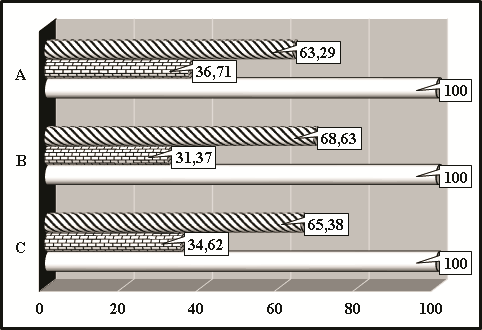
Figure
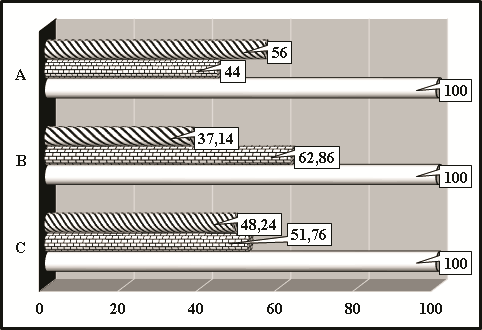
It was found that about 75% of all graduate students (Figure
It was revealed that about 74% of all graduate students (Figure
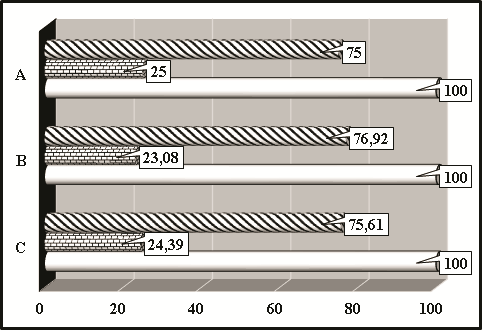
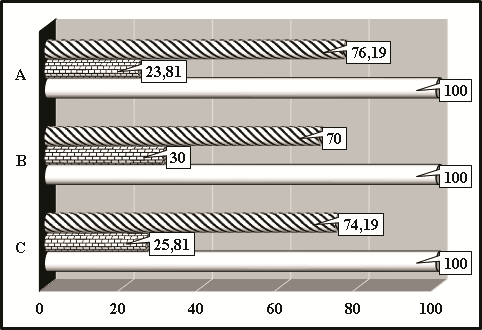
Figure
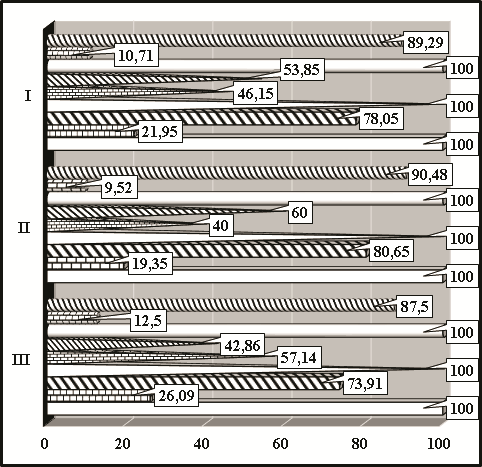
Out of the number of graduate students, who received final certification in the academic discipline “The highest achievements' sport as a sphere of creative activity” (Figure
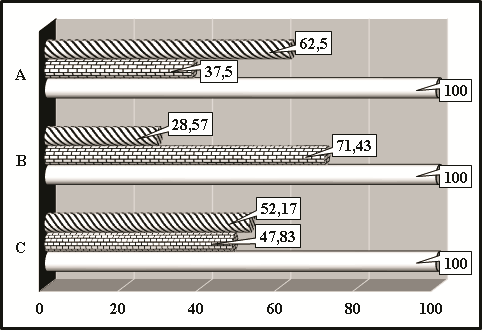
In addition, among the graduate students, who received the final certification in the academic discipline “The highest achievements' sport as a sphere of creative activity” (Figure
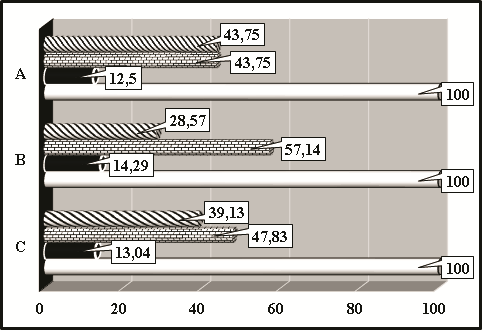
Results from explanatory statistics (analysis of contingency tables)
Analysis of contingency tables by the relationship “Form of education * Gender”
Direct relationship analysis (the form of education is the leading variable, gender is the dependent variable; Figure
Feedback analysis (the form of education is the dependent variable, gender is the leading variable; Figure
Analysis of contingency tables by the relationship “Course * Gender”
Direct relationship analysis (course is the leading variable, gender is the dependent variable; Figure
Feedback analysis (course is the dependent variable, gender is the leading variable; Figure
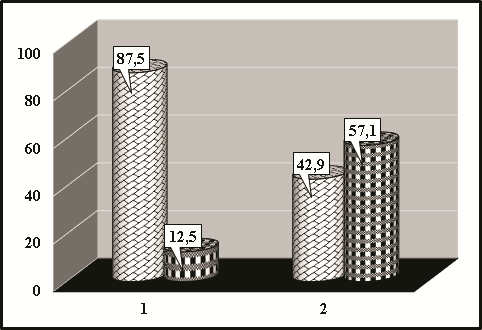
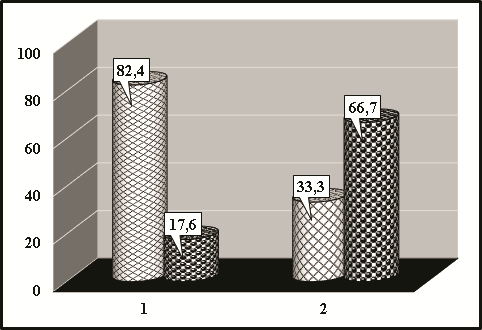
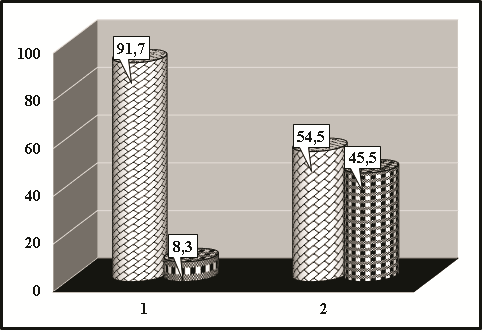
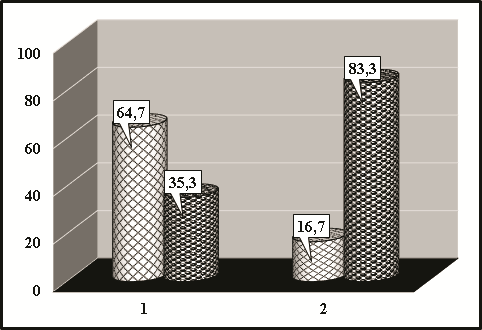
Results from explanatory statistics (correlation analysis)
As a result of applying correlation analysis to scalar variables that determine the number of points received by graduate students (n = 23) for all tasks of the current control, and the total number of points in the academic discipline “The highest achievements' sport as a sphere of creative activity” (Figure
Also, based on the results of applying correlation analysis to scalar variables that determine the number of points received by graduate students for all tasks of the current control, and the number of points received by graduate students for passing the intermediate control (exam) in the academic discipline “The highest achievements' sport as a sphere of creative activity” (Figure
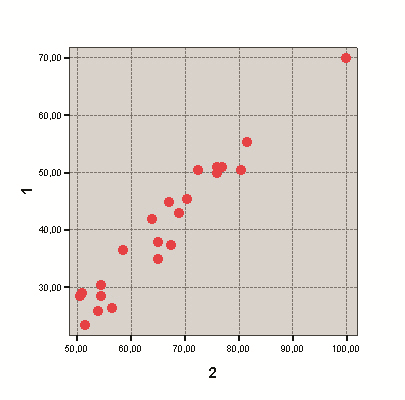
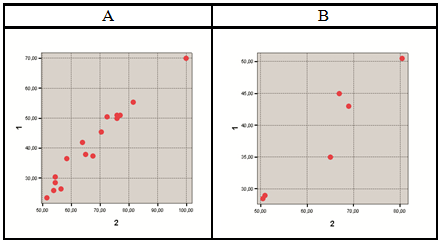
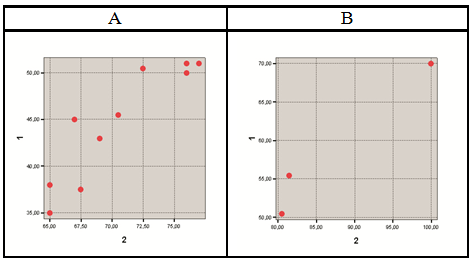
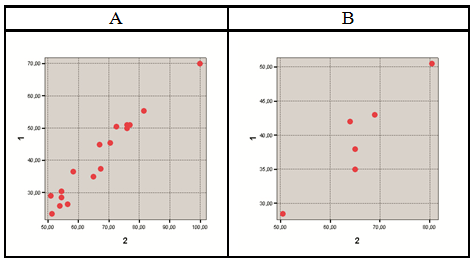


Conclusion
Thus, the digital format for the development of educational material allows the teacher to form the competencies of graduate students in the field of physical culture and sport in full, giving them the opportunity to plan educational routes taking into account their interests and ambitions for the final level of mastering the discipline (threshold, intermediate or advanced).
The discussion of the results
Therefore, the methodological approach to the development and implementation of the distance course “The highest achievements' sport as a sphere of creative activity” can be considered as an example of the effective development and implementation for other distance courses.
This methodological approach is based on the following provisions:
- the graduate student must complete the relevant tasks of current control for all sections of the discipline;
- there should be tasks of current control of a research nature; in the case, when the task involves summarizing the information, the task itself should be two-step – after checking the result of the review, the graduate student is asked to fill out a table with problematic “columns” for the control questions chosen by the teacher;
- there should be tasks of the current control of a research nature, involving the implementation by the graduate student of creative developments;
- all classroom types of assignments (used in the traditional format) here are transformed into a two-stage format: initial written development followed by filling out a table with problematic “columns” for control questions chosen by the teacher;
- without the obligatory passing of the intermediate control, the points for completed tasks of the current control are not counted (it is impossible to automatically get the marks “satisfactory” or “good”).
References
- Anderson, T., & Dron, J. (2011). Three generations of distance education pedagogy. International Review of Research in Open and Distributed Learning, 12(3), 80-97.
- Bordovsky, P. G., Ayzyatullova, G. R., & Sakharnova, T. K. (2019). Distance learning in sports aerobics discipline in university conditions. Theory and Practice of Physical Culture, 9, 54-59. http://www.teoriya.ru/en/node/10856
- Bozkurt, A., Akgun-Ozbek, E., Yilmazel, S., Erdogdu, E., Ucar, H., Guler, E., Sezgin, S., Karadeniz, A., Sen-Ersoy, N., Goksel-Canbek, N., Dincer, G. D., Ari, S., & Dincer, G. D. (2015). Trends in distance education research: A content analysis of journals 2009-2013. International Review of Research in Open and Distributed Learning, 16(1), 330-363.
- Chechelnitskaya, S. M. (2014). E-Learning and Distance Learning in Teacher Training Institute of Physical Culture and Sport of MSTTU. Theory and Practice of Physical Culture, 3, 9-10. http://www.teoriya.ru/en/node/2091
- Dede, C. (1996). The evolution of distance education: Emerging technologies and distributed learning. American Journal of Distance Education, 10(2), 4-36.
- Jiang, L., Yu, S., & Zhao, Y. (2019). Teacher engagement with digital multimodal composing in a Chinese tertiary EFL curriculum. Language Teaching Research, 1362168819864975.
- Kim, S., Chung, K., & Yu, H. (2013). Enhancing digital fluency through a training program for creative problem solving using computer programming. The Journal of Creative Behavior, 47(3), 171-199.
- Landa, B. Kh. (2016). Self-diagnostics of students' health during distant learning of physical education. Theory and Practice of Physical Culture, 4, 50-51. http://www.teoriya.ru/ru/node/4782
- Lukina, S. M., Lobanov, Yu. Ya., Sharonova, A. V., Yarchikovskaya, L. V., & Mironova, O. V. (2019). Innovative technologies for academic physical education and sport service. Theory and Practice of Physical Culture, 4, 44-45. http://www.teoriya.ru/en/node/10013
- Mikhaylova, D. A. (2014). Sport of the highest achievements as a sphere of creative activity: a tutorial for students enrolled in the educational program Training of Highly Qualified Athletes in a Selected Sports. National State University of Physical Culture, Sports and Health named after P. F. Lesgaft, St. Petersburg, St. Petersburg.
- Mikhaylova, D. A. (2015). Higher achievement sport as a sphere of creative activity in a retrospective of Russian scientific researches: a tutorial for students enrolled in the profile Training of Highly Qualified Athletes in a Selected Sports, Teaching Direction 49.04.01 Physical Culture (National State University of Physical Culture, Sports and Health named after P. F. Lesgaft, St. Petersburg, St. Petersburg.
- Petrov, P. K. (2017). Information technology for physical education: experience and challenges. Theory and Practice of Physical Culture, 1, 6-8. http://www.teoriya.ru/ru/node/5849
- Somkin, A. A., Lyashenko, O. V., & Konstantinov, S. A. (2019). Digital educational information service for physical education at Humanities University. Theory and Practice of Physical Culture, 6, 66–68. http://www.teoriya.ru/ru/node/10788
- Ul'yanov, D. A., & Kovalenko, T. G. (2016). Personality-centered physical culture formation technology: distance physical education and health support format for university students of special health departments. Theory and Practice of Physical Culture, 9, 33-35. http://www.teoriya.ru/ru/node/5103
- Veselovskaya, Y. A., Sidorova, N. V., Kuzina, N. G., & Stolyarova, I. V. (2018). Interactive distance education technologies: physical education and sports educational process quality analysis. Theory and Practice of Physical Culture, 2, 12-14. http://www.teoriya.ru/ru/node/7645
- Yakhontov, E. R. (2002). Methodology of sports and pedagogical research : a course of lectures. St. Petersburg State Academy of Physical Culture named after P. F. Lesgaft, St. Petersburg.
- Zakrevskaya, N. G., Utisheva, E. V., Bordovskiy, P. G., & Komeva, E. Y. (2018). Electronic information and education environment as academic communication tool. Theory and Practice of Physical Culture, 2, 9-11. http://www.teoriya.ru/ru/node/7943
- Zawacki-Richter, O., Bäcker, E. M., & Vogt, S. (2009). Review of distance education research (2000 to 2008): Analysis of research areas, methods, and authorship patterns. International Review of Research in Open and Distributed Learning, 10(6), 21-50.
Copyright information

This work is licensed under a Creative Commons Attribution-NonCommercial-NoDerivatives 4.0 International License.
About this article
Publication Date
08 March 2021
Article Doi
eBook ISBN
978-1-80296-102-7
Publisher
European Publisher
Volume
103
Print ISBN (optional)
-
Edition Number
1st Edition
Pages
1-644
Subjects
Digital economy, cybersecurity, entrepreneurship, business models, organizational behavior, entrepreneurial behavior, behavioral finance, personnel competencies
Cite this article as:
Mikhaylova, D. A. (2021). Digital Education For Physical Culture And Sport: Views And Experience. In N. Lomakin (Ed.), Finance, Entrepreneurship and Technologies in Digital Economy, vol 103. European Proceedings of Social and Behavioural Sciences (pp. 405-420). European Publisher. https://doi.org/10.15405/epsbs.2021.03.51

